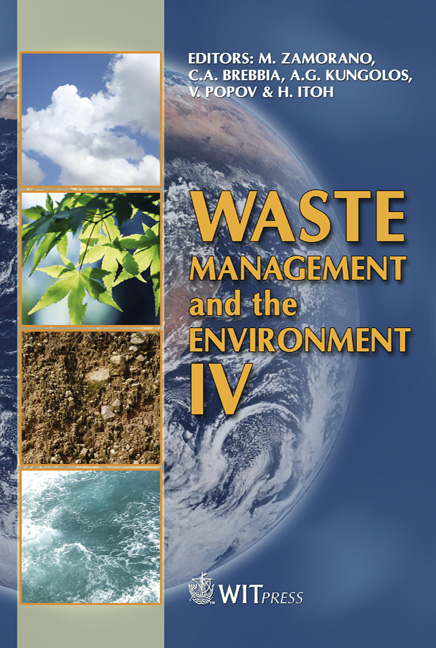A New High Rate Anaerobic Technology, The Static Granular Bed Reactor (SGBR), For Renewable Energy Production From Medium Strength Waste Streams
Price
Free (open access)
Transaction
Volume
109
Pages
10
Page Range
141 - 150
Published
2008
Size
443 kb
Paper DOI
10.2495/WM080161
Copyright
WIT Press
Author(s)
T. G. Ellis & K. M. Evans
Abstract
A new high rate anaerobic treatment system has been developed for maximizing the conversion efficiency of organic matter to energy in the form of methane for medium strength (1–10 g COD L-1) waste streams. The system, termed the static granular bed reactor (SGBR), utilizes a downflow hydraulic regime through a dense bed of active anaerobic granules that can accommodate higher suspended solids concentrations than its counterpart, the upflow anaerobic sludge blanket (UASB) reactor, which is susceptible to solids washout due to the high (up to 1 m h-1) upflow velocities. Theoretical considerations for the SGBR are presented with results from SGBR treatment of synthetic (non-fat dry milk and sucrose) and actual (pork slaughterhouse and landfill leachate) wastewaters documenting the high efficiency (consistently greater than 90% conversion of COD) and excellent effluent characteristics (typically less than 50 mg L-1 total suspended solids and BOD5). Transient hydraulic and organic loads have relatively little effect on the SGBR as evidenced by consistent performance during an instantaneous shift in the hydraulic residence time from 36 to 5 h. In addition, results from variable reactor seeding from 25 to 100% of bed volume showed relatively little dependence of granule bed mass on effluent characteristics. This finding confirms independent results showing that a large fraction of the granule bed is substrate limited and available as reserve biomass. These results help explain the excellent treatment performance and resiliency of the SGBR regardless of hydraulic and organic loading. Fatty acid methyl ester (FAME) analysis of the granules showed distinct microbial communities entirely dependent on the nature of the feed source. Furthermore, FAME profiles from an anaerobic sequencing batch reactor (ASBR) treating pork slaughterhouse wastewater showed distinctly different profiles than an SGBR treating the same wastewater. Energy production from the SGBR was close to the theoretical 0.35 L (g COD removed)-1 for all waste streams evaluated. Keywords: high rate anaerobic digestion, methanogenic, anaerobic granular sludge, UASB, EGSB, fatty acid methyl ester (FAME).
Keywords
high rate anaerobic digestion, methanogenic, anaerobic granular sludge, UASB, EGSB, fatty acid methyl ester (FAME).





